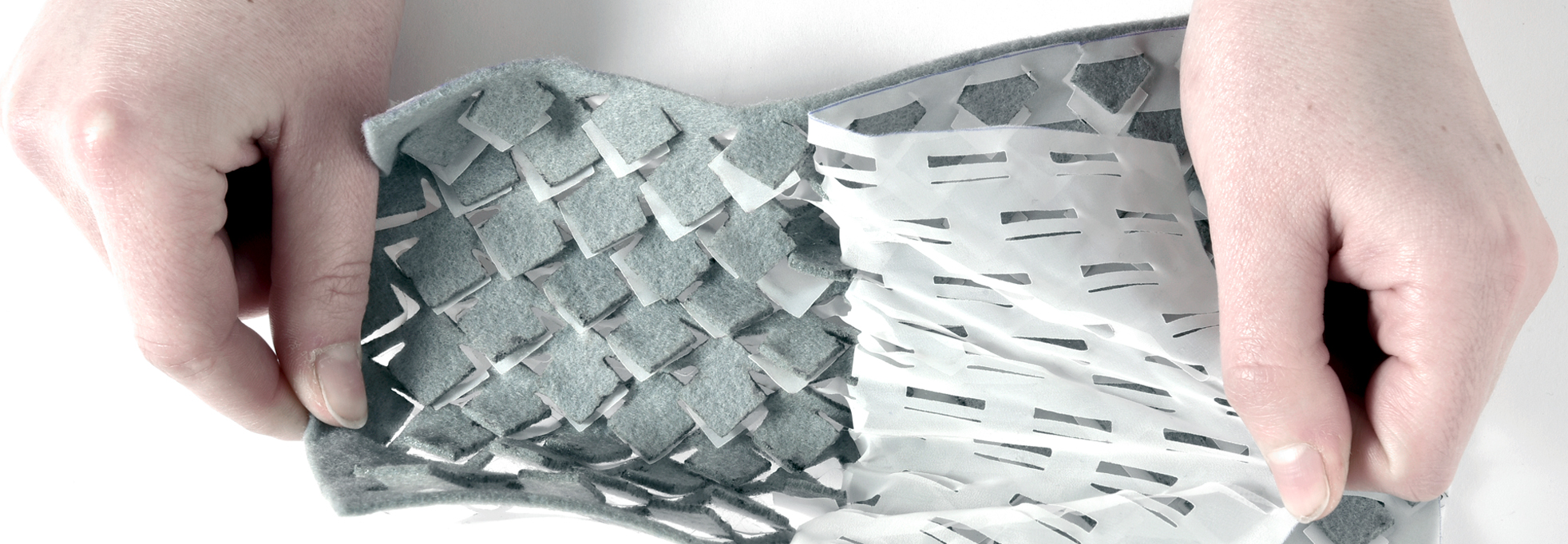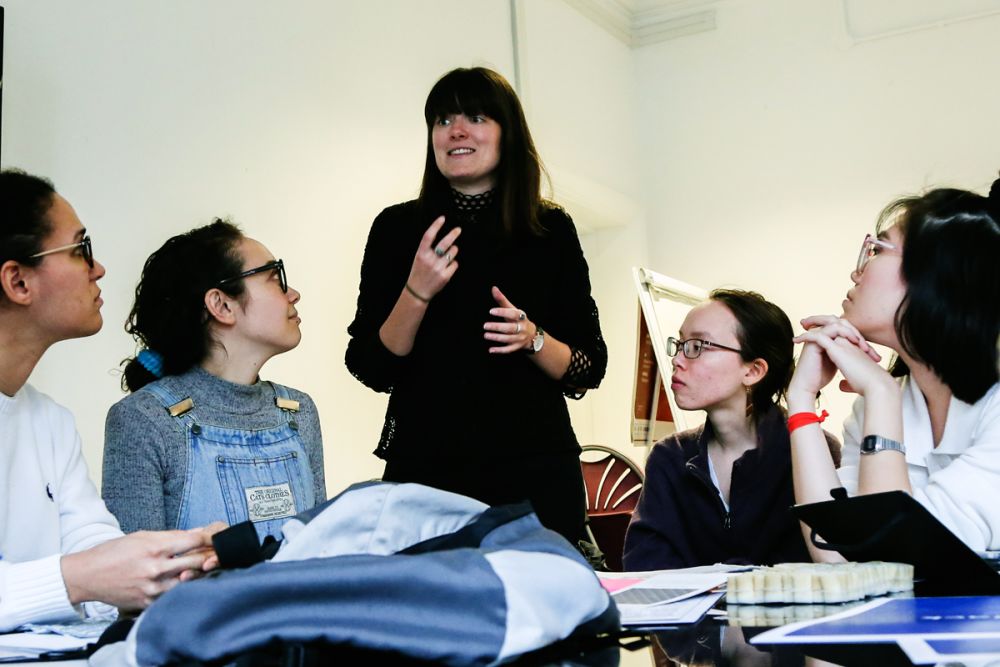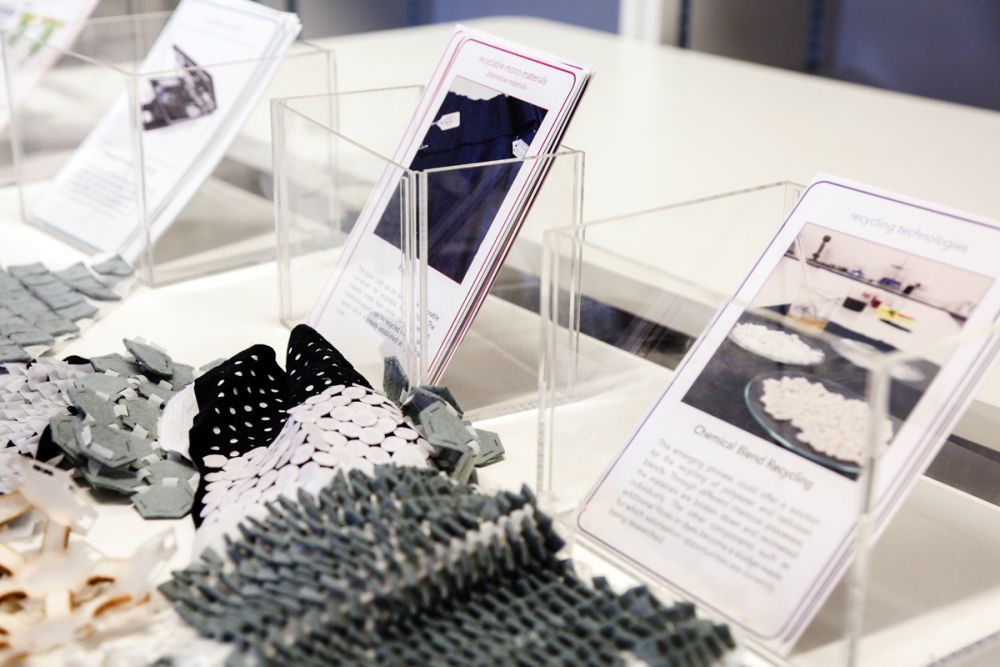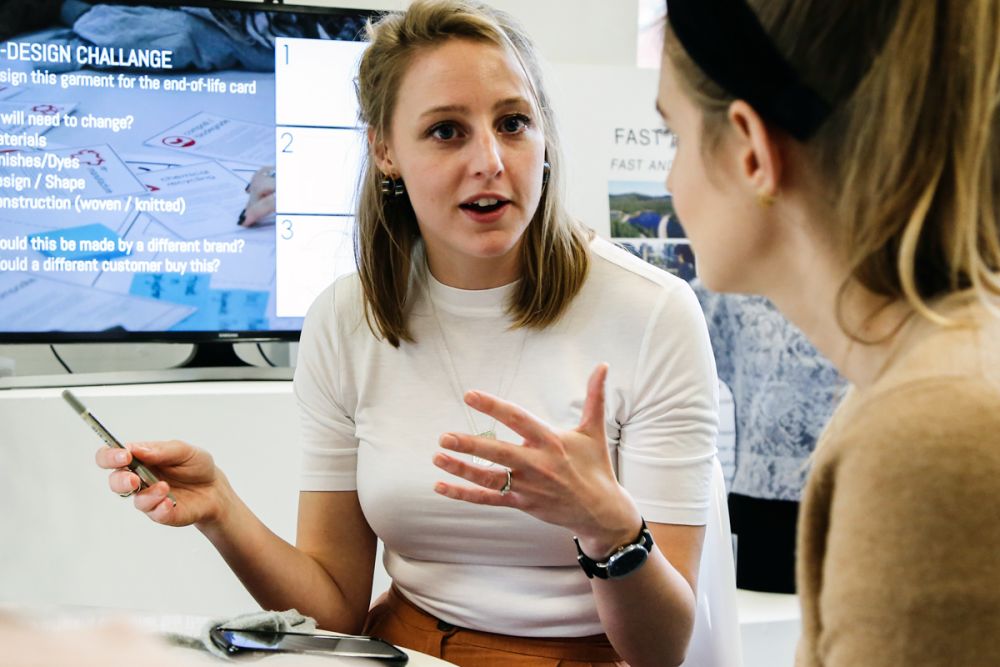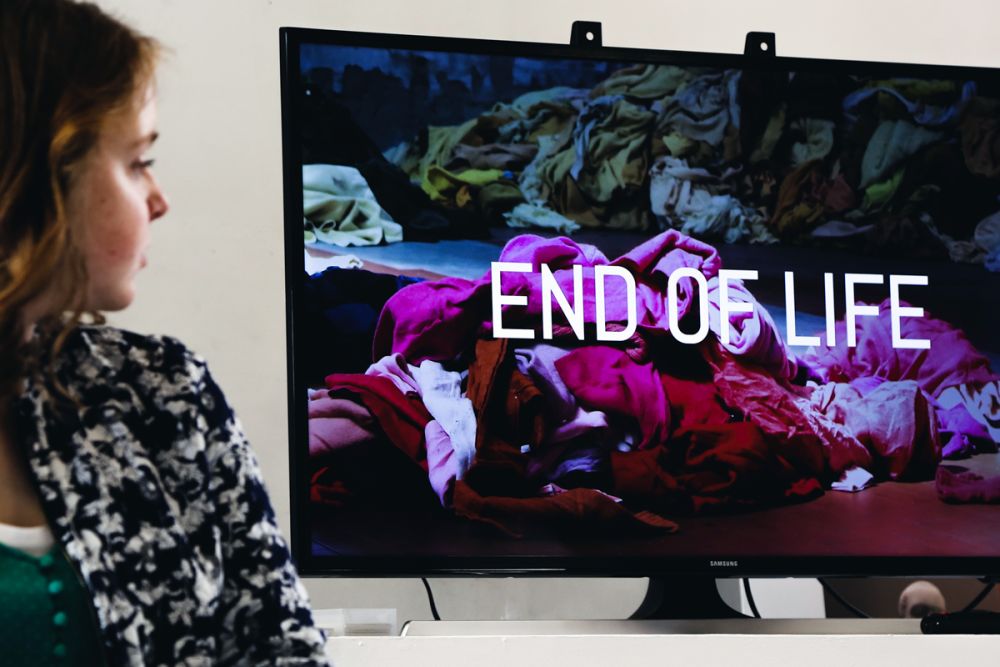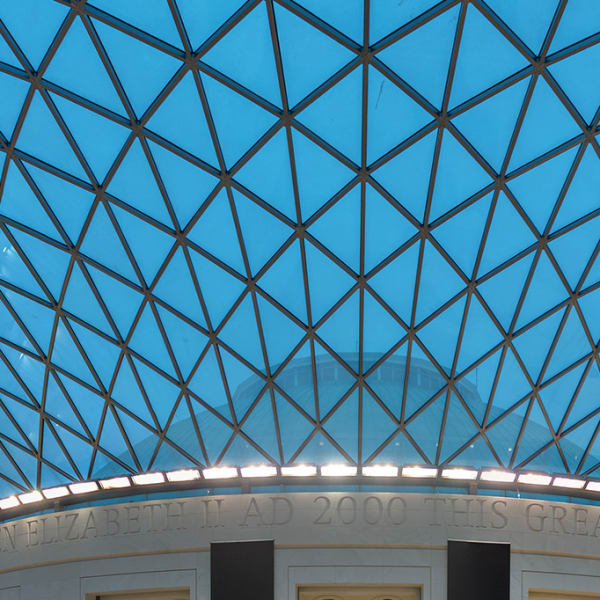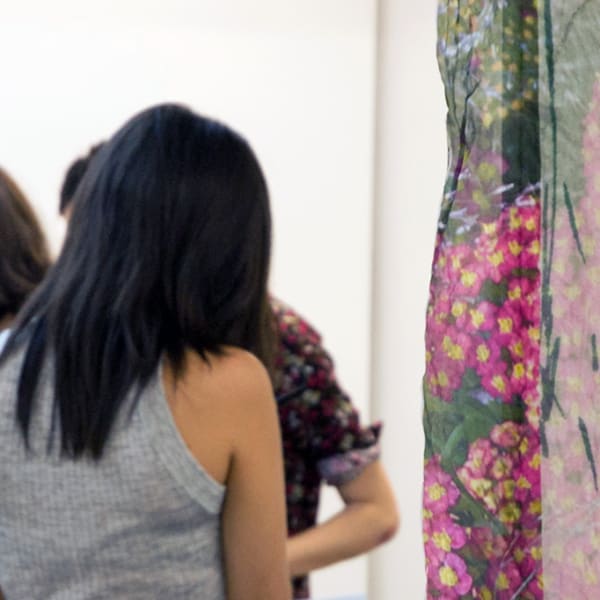We recently sat down with Laetitia Forst and Cathryn Anneka from Centre for Circular Design (CCD) to chat about sustainability, designing for a circular economy and what students can expect to take away from our Design for Sustainability - Fashion and Textiles short course.
Following this, we carried out a Q&A with Cathryn Anneka, a PhD student at Chelsea College of Arts, researching textile recycling. In particular, Cathryn talks about mechanical textile recycling technology and how clothes can be better recycled so that it can be more sustainable in the future. Cathryn talks us through her research, motivation and route into working in sustainable textile design, before going into some more detail about the new course.
What is your day-to-day job?
As PhD researchers at the Centre for Circular Design, the main part of our work is to explore how we can find solutions through design to textile recycling issues. We achieve this through desk-based research, interviews and conversations with various experts in the field, and, most importantly, through textile design practice. We also organise events to bring researchers, industry and students together through talks and workshops.
Can you describe a typical day in your life?
A typical day would contain a mix of desk-based research: reading and writing papers and meeting with the other members of the Centre for Circular Design team to plan teaching or public-facing events. We do get to a lot of happenings – from new materials and book launches to talks by high-profile experts – which forms a constant source of inspiration and knowledge to build our ideas on.
What was your route into working with the sustainable textiles industry?
We have both had some experience in the textile industry as freelance designers and started exploring sustainability during our MA studies. This brought up a wealth of questions that we decided to take forward into PhD research. Once you start looking at these issues and the industry, you quickly realise just how much work we all need to do to change things.
What was the motivation that drove you down that path?
We were feeling frustrated at the inertia of the industry and had a hunch that there were solutions that could push textile design towards more sustainable practices. It was also because the most innovative work was coming out of the sustainability discourse – the true future thinkers!
What has been the highlight of your career so far?
At the Centre for Circular Design, we are all very proud of the community we have built in the field of Circular Design. Through engaging students and industry in workshop activities and talks, and through our making and writing, we have brought some crucial insights and methods to the fore of the debate around sustainability. This has given tools to young designers and entrepreneurs to take into their own practice.
What is Circular Design and how did you get involved with UAL's Centre for Circular Design?
Circular Design rests on the belief that waste is a design mistake and that all resources should be circulated to be reused as nutrients in perpetual biological or technical cycles. We are both so fortunate to be a part of the Centre for Circular Design through our PhD research. We are part of a bigger team doing sustainable textile research. We are both exploring the ways in which blended textiles could be designed for improved recyclability.
How is the UAL: Centre for Circular Design leading research in Sustainable Design with Textiles?
The Centre for Circular Design is unique in the way that it is bridging textile design practice with big-picture questions about the future or our environment and cultural economies. It has achieved substantial results in developing solutions for circular fashion with multi-disciplinary teams of brands, scientists, user behaviour experts, etc. and is showing the way ahead for a more sustainable industry. Centre for Circular Design members work closely and within flexible collaborations built on trust and a shared passion for change through design!
Where do you see for the future of Environmental / Circular Design with Textiles?
Circularity and design for sustainability is the future of design. It should already be embedded in the daily processes and systems of everything around us. We think it's technically possible – but we have work to do to make the changes economically viable. That’s where our creative design thinking work makes a big difference.
Centre for Circular Design (CCD)
How can future designers start incorporating more ‘Circular Design’ in their work?
One of the main criteria for Circular Design is to take end-of-life into account from the very first stages of the design process. This means understanding the most appropriate recycling routes each material that goes into the product as well as the systems that are involved in this lifecycle journey.
Why are the TEN Design strategies so important?
The TEN Design strategies break down the hugely complex challenges of sustainability into aspects which are directly relevant to the skills and influence of designer in the industry. It challenges the way of thinking about materials, products and systems to drive positive change. They are also playful, flexible and open – which means designers find them exciting and stimulating to work with.
What should students interested in Environmental Textile Design in London do and see?
In London, at the moment, the V&A exhibition: ‘Food: bigger than the plate’ draws on similar issues as those in circular design. It touches on the complexity and invisibility of supply chains and considers the whole life cycle of food from disposal to production which is a crucial aspect of circular design.
What is the most important resource for learning about Environmental Design with Textiles?
The publications from the two recently completed research projects the Centre for Circular Design was involved in - Mistra Future Fashion and Trash-2-Cash - present a wealth of information on the topic, from user survey results to technical innovation all the way through new circular design systems and concepts. You can read and watch films on websites.
What’s the best piece of advice you’ve ever been given?
Designers are in charge of so much more than just than the aesthetics of a product, don’t be afraid to tackle big issues.
What do you enjoy most about your short course?
We love getting participants to challenge their design habits. It is so exciting to hear about their ideas. We love to see the lightbulb moments and to see how well our tools help out those that get stuck on the barriers.
What can students expect from your course?
Students can expect to learn, in detail, about The TEN; ten strategies for designers to design more sustainably. They are demonstrated through case studies of exemplary contemporary design in this field. They will learn how to apply the thinking to a product through a redesign process, using our tools.
Why is your course an important step for designers who want to create more sustainable products?
This course is the perfect start for students to start thinking about sustainable design. It provides a set of concrete strategies for designers looking to create more sustainable products. It also helps designers to understand more about their voice, their agency, their power to challenge and disrupt the status quo.
